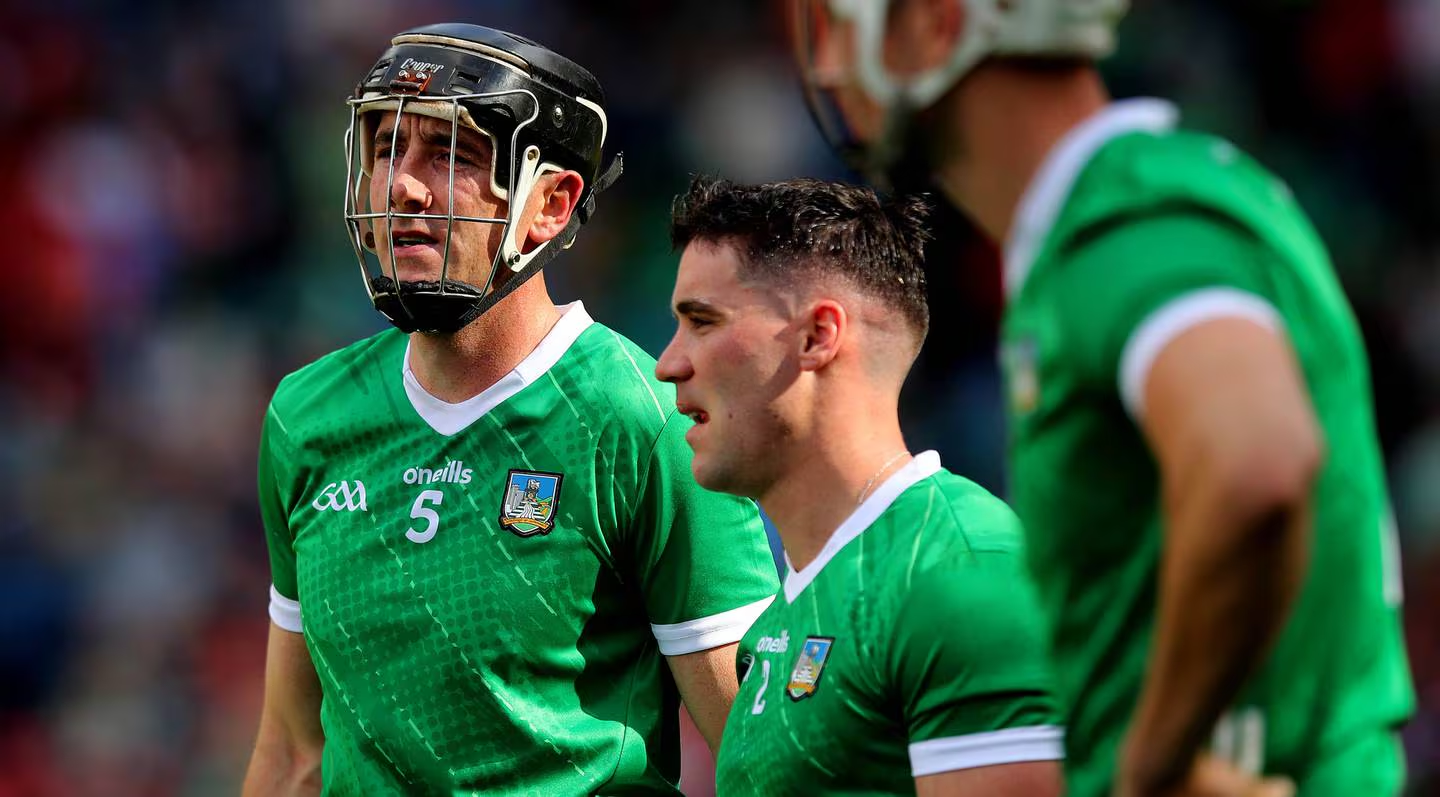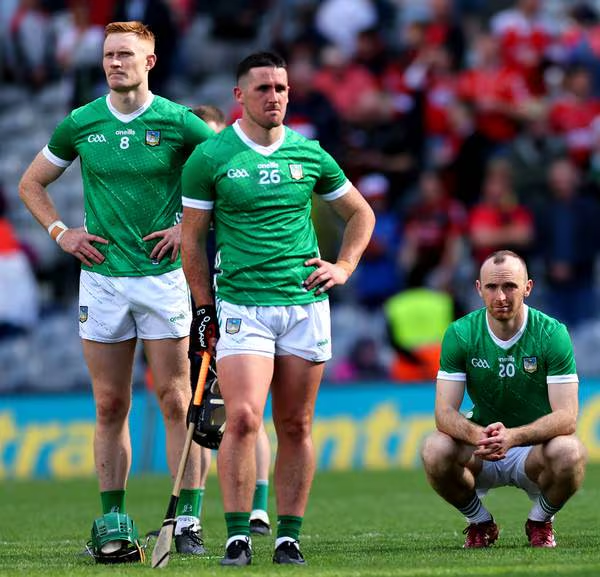Limerick’s forever heroes fall short of history - but they’ll be back
At 16 minutes to six o’clock on Sunday evening, the Limerick squad huddled close to the edge of the Croke Park pitch, near the mouth of the tunnel. They faced the Hogan Stand and started to clap up towards those in the seats.
Not that anybody was actually sitting. All around the stadium swathes of Limerick fans stood and applauded their fallen heroes with the kind of love and affection only possible through shared memories.
They stood and acclaimed each other; players thanking fans, fans thanking players.
Limerick lost a match on Sunday and lost their shot at the five-in-a-row, but the brilliance of what this team has managed to achieve can’t be etched away.
In the barstool debates about hurling’s greatest team, Limerick or Kilkenny, those in the black and amber corner will argue the Cats got closest to the cream. Still, history will ultimately show both won four on the bounce. Everything else is just opinion.
Cork had to deliver a performance for the ages to shake off Limerick on Sunday. Twice in the second half the Rebels extended their lead to seven points. But on each occasion, Limerick raged against the momentum of the match and reeled in the deficit.
Just as they had done after Cork’s first half goal from Brian Hayes. Of the subsequent 10 points scored after that goal, Limerick accounted for eight of them.

Limerick’s Diarmaid Byrnes dejected after Sunday's defeat to Cork. Photograph: Ryan Byrne/Inpho
There were certain tactical moves Limerick might review and feel they could have dealt with better, and certainly their efficiency in front of the posts was not where they would have wanted it to be. Cork’s pace caused them problems throughout.
They might well have been advised to also check what Patrick Collins was storing in his holster because Limerick could not counteract the Cork goalkeeper delivering rapid puckouts with the kind of ridiculous speed that suggested he might well be shooting sliotars out of a Nerf Pinpoint Blaster gun rather than using his hurl. Ping, ping, ping ...
With six minutes of normal time remaining, Limerick found themselves six points down. Again, they rallied and scored the last four points of the contest. They refused to go quietly.
[ Five things we learned from the GAA weekend: Cork’s sheer bolshie bloody-mindedness won the day ]
Both managers were gracious afterwards – John Kiely praising Cork and Pat Ryan lauding Limerick.
“They’ve brought the game to a new level and they’re testing all of us to get better and to bring things to a new level and raise standards both on and off the field,” said Ryan afterwards.
You won’t find many arguing against that point. From Nickie Quaid in goal to Aaron Gillane at the other end of the field, Limerick created history with a group of incredibly talented and committed hurlers.
Their half-back line, hurling’s green wall, proved insurmountable so often to opponents. Limerick built an empire from there.
The sheer physical size of the players was imposing but never has such a big team possessed such an array of silky hurling skills. Hurling or war, whatever way you wanted to engage Limerick, they could dance.

Limerick’s William O’Donoghue, Darragh O’Donovan and Richie English. Photograph: James Crombie/Inpho
Teams had to find a way to destabilise hurling’s green giants. It has taken years.
“Listen, isn’t it great to be a leader in a field and for others to follow the things that you’ve done?” remarked Kiely.
“There are lots of great teams, lots of great players out there and for them to go and do things that maybe we might have done or that maybe Paul [Kinnerk] might have devised or created, you know, worked on with the lads. I think that’s the ultimate compliment people can pay you, isn’t it?”
It would be foolhardy to assume this is the end of Limerick’s glorious era. The five-in-a-row is gone and while some players might move on, the age profile of the group is healthy.
[ Ten pictures that show how Cork stopped Limerick’s bid for hurling history while creating some of their own ]
Cian Lynch is just 28. Tom Morrissey and Seán Finn are also both 28. Gearoid Hegarty is 29, Aaron Gillane is 27, Kyle Hayes will only turn 26 later this month.
And then there are the emerging stars. Of Limerick’s last seven points on Sunday, four came from subs – two from Shane O’Brien and two from Adam English. Both players are highly rated and looked completely at home in that high pressure environment. They weren’t afraid to take on the responsibility of shooting.

It remains to be seen if Limerick manager John Kiely will be back in 2025. Photograph: James Crombie/Inpho
Cathal O’Neill made an impact this season while others likes Donnacha Ó Dálaigh, Aidan O’Connor and Colin Coughlan are expected to see more game time in the seasons ahead.
It remains to be seen if Kiely will remain at the helm for 2025 or if there will be a shake-up of the backroom team, but Limerick will certainly hope he stays in the wheelhouse.
“The group of guys that are inside in that dressing room are incredibly dedicated,” said Kiely of his players afterwards. “I’ve no doubt Limerick will regroup and come back in 2025, refreshed and ready to go again. There’s no reason why they can’t.”
Late on Sunday night, when the team arrived back at Colbert Station, they were greeted by dozens of supporters applauding them off the train, thanking them for the pride and renewed confidence they had brought to the county in recent years.
‘We’ll be back,’ they reassured the players as they alighted from the carriages, all those present on the platform confident this was not the end of the journey, just a stop along the way.
Because in Limerick, they are not fallen heroes. They are in fact forever heroes.

